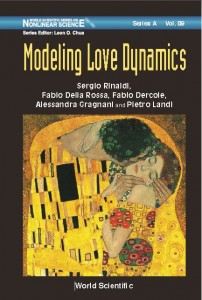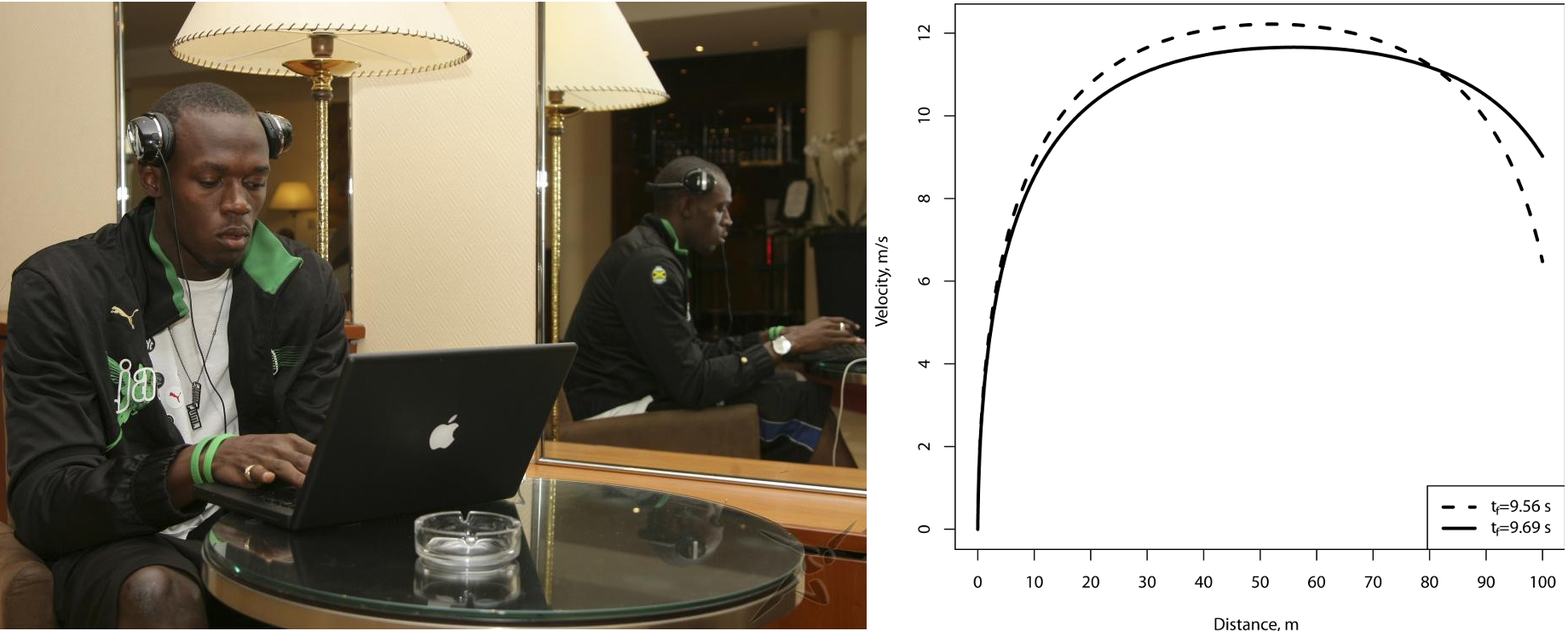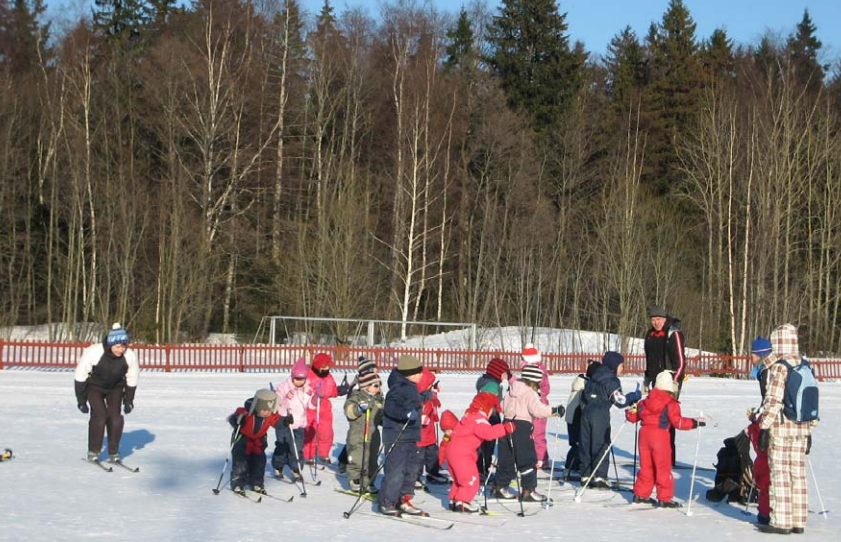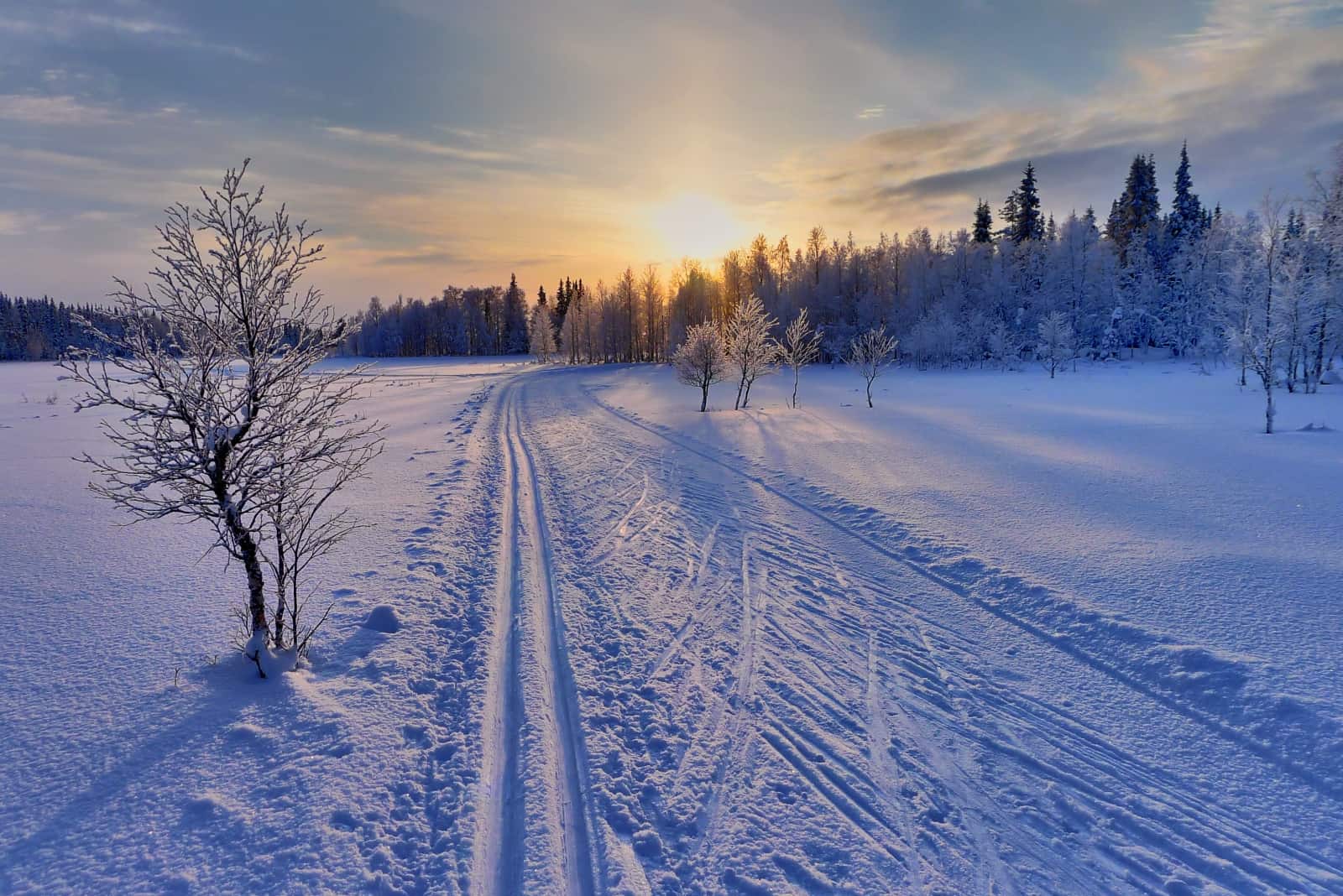Mar 18, 2016 | Alumni, Systems Analysis, Young Scientists
By Célian Colon, PhD student at the Ecole Polytechnique in France & IIASA Mikhalevich award winner
How can we best tackle risks in our complex and interconnected economies? With globalization and information technologies, people and processes are increasingly interdependent. Great ideas and innovations can spread like wildfire. However, so can turbulence and crises. The propagation of risks is a key concern for policymakers and business leaders. Take the example of production disruption: with global supply chains, local disasters or man-made accidents can propagate from one place to another, and generate significant impact. How can this be prevented?

Risk propagation is like a domino effect. Credit: Martin Fisch (cc) via Flickr
As part of my PhD research, I met professionals on the ground and realized that supply risk propagation is a particularly tricky issue, since most parts of the chains are out of their control. Supply chains can be very long, and change with time. It is difficult to keep track of who is working with whom, and who is exposed to which hazard. How then can individual decisions mitigate systemic risks? This question directly connects to the deep nature of systemic problems: everyone is in the same boat, shaping it and interacting with each other, but no one is individually able to steer it. Surprising phenomena can emerge from such interactions, wonderfully illustrated by bird flocking and fish schooling.
As an applied mathematician thrilled by such complexities, I was enthusiastic to work on this question. I built a model where firms produce and interact through supply chain relationships. Pen and paper analyses helped me understand how a few firms could optimally react to disruptions. But to study the behavior of truly complex chains, I needed the calculation power of computers. I programmed networks involving a large number of firms, and I analyzed how localized failures spread throughout these networks, and generate aggregate losses. Given the supply strategy adopted by each firm, how could systemic risk be mitigated?
With my collaborators at IIASA, Åke Brännström, Elena Rovenskaya, and Ulf Dieckmann, we have highlighted the key role of coordination in managing risks. Each individual firm affects how risks propagate along the chain. If they all solely focus on maximizing their own profit, significant amounts of risk remain. But if they cooperate, and take into account the impact of their decisions on the risk profile of their trade partners, risk can be effectively mitigated. Reducing systemic risks can thus be seen as a common good: costs are heterogeneously borne by firms while benefits are shared. Interestingly, even in long supply chains, most systemic risks can be mitigated if firms only cooperate with only one or two partners. By facilitating coordination along critical supply chains, policy-makers can therefore contribute to the reduction of risk propagation.

Colon’s model analyzes how firms produce and interact through supply chain relationships. Credit: Jan Buchholtz (cc) via Flickr
Drawing robust conclusions from such models is a real challenge. On this matter, I benefited from the experience of my IIASA supervisors. Their scientific intuitions greatly helped me focusing on the most fertile ground. It was particularly exciting to borrow techniques from evolutionary ecology and apply them to an economic context. Conceptually, how economic agents co-adapt and influence each other shares many similarities with the co-evolution of individuals in an ecological environment. To address such complex issues, I strongly believe in the plurality of approaches: by illuminating a problem from different angles, we can hope to see it more clearly!
Note: This article gives the views of the author, and not the position of the Nexus blog, nor of the International Institute for Applied Systems Analysis.
Feb 12, 2016 | Systems Analysis
By Sergio Rinaldi, IIASA Evolution and Ecology Program and Politecnico di Milano, Italy
Is it possible to predict how love stories develop, progress, and end using mathematical models? I have studied this question over the past 20 years with a group of researchers at IIASA and at the Politecnico di Milano, and as we show in our new book Modeling Love Dynamics (World Scientific, 2016), the answer is yes. The emerging message is that prediction is possible, if we can describe in formulas the way each individual reacts to the love and to the appeal of the partner.
Consider a standard love story, which develops like those described in a classical Hollywood movie such as Titanic. This story can be easily modeled, if one considers reasonably appealing individuals who increase their reaction with the partner’s love – so called secure individuals. Starting from the state of indifference, where the individuals are at their first encounter, their feelings continuously grow and tend toward a positive plateau.

Mala Powers and José Ferrer in Cyrano de Bergerac, 1950. – Public Domain
Love stories become more intriguing when one individual is not particularly appealing, if not repelling, as in the fairy tale “Beauty and The Beast.” Indeed, in these cases, there exists also a second romantic regime, which is negative and can therefore entrain, in the long run, marital dissolution. In order to avoid that trap, people who are not very charming, or believe to be so, do all they can to look more attractive to the partner. At the first date, she wears her nicest dress and he shows up with his best fitting T-shirt. However, after a while, the bluffing can be interrupted, because the couple has entered the safe basin of attraction of the positive regime. Needless to say, the model also supports much more sophisticated behavioral strategies, like that described by Edmond Rostand in his “Cyrano de Bergerac,” the masterpiece of the French love literature.
Not all individuals are secure. Indeed, some people react less and less strongly when the love of the partner overcomes a certain threshold. These individuals, often very keen to flirtation, are incapable of becoming one with their partner. The model shows that couples composed of insecure individuals tend, with almost no exception, toward an unbalanced romantic regime in which the most insecure is only marginally involved and is therefore prone to break up the relationship at the first opportunity. This is why after just 20 minutes of the very long “Gone with the Wind,” when one realizes that Scarlett and Rhett are both insecure, the model can already predict the end of the film, where he quits her with the lapidary “Frankly, my dear, I don’t give a damn.” The same conclusion is expected if only one of the two individuals is insecure. This explains the numerous failures in the romantic life of some individuals, like the beautiful star Liz Taylor, who is described as very insecure in all her biographies, and went, indeed, through eight marriages.

Clark Gable and Vivien Leigh in Gone with the Wind, 1939 – MGM Pictures | Public Domain
Mathematical models can also be used to interpret more complex romantic behaviors. Particularly important is the case of individuals who overestimate the appeal of the partners when they are more in love with them (like parents who have a biased view of the beauty of their own kids). Interestingly, if insecurity is also present, biased couples can have romantic regimes characterized by recurrent ups and downs. In other words, the theory says that bias and insecurity is an explosive mix that triggers turbulence in the life of a couple.
In the second part of the book we focus on the effects of the social environment and to the consequences of extra-emotional compartments. In this context, our analysis of the 20-years long relationship between Laura and the famous Italian poet Francis Petrarch shows that poetic inspiration is an important destabilizing factor, responsible for transforming a quiet relationship into a turbulent one.
Finally, we studied triangular relationships, with emphasis on the effects of conflict and jealousy. In all these cases the dynamics of the feelings can be very wild, up to the point of being chaotic and, hence, unpredictable. When this occurs, the life of the couple becomes unsustainable, because painful periods of crisis can virtually start at any moment: a heavy permanent stress. The model can thus explain why the relationship is often interrupted, sometimes even tragically, as in the famous film by François Truffaut “Jules et Jim”, where Kathe’s suicide is perceived as a real relief.
 More information: Watch a video of Sergio Rinaldi’s talk at the 2015 Systems Analysis Conference.
More information: Watch a video of Sergio Rinaldi’s talk at the 2015 Systems Analysis Conference.
Reference
Rinaldi S, Della Rossa F, Dercole F, Gragnani A, Landi P, (2015). Modeling Love Dynamics. World Scientific, Singapore [January 2016] http://www.worldscientific.com/worldscibooks/10.1142/9656
Note: This article gives the views of the author, and not the position of the Nexus blog, nor of the International Institute for Applied Systems Analysis.
Feb 3, 2016 | Systems Analysis
By Andrey Krasovskii, IIASA Ecosystems Services and Management Program
During his workout in the IIASA gym, my colleague Pekka Lauri often runs on a treadmill. He adjusts the velocity of running using the control panel, and it indicates the distance and approximate calories burnt. While Pekka may not be thinking about mathematical models during his workout break, running and other athletic performance can be modeled using some of the same techniques that we use for other questions at IIASA.
Outside of my academic work at IIASA, I am highly interested in sports, and athletics in particular. My wife, Katy Kuntsevich, has won Austrian championships in high jump several times, and my brother, Nikolay, was on his university team as a 400 meter runner.
Visiting my hometown Ekaterinburg, Russia, back in 2014, I got into a dispute with my father, who is a university professor in theoretical mechanics. Namely, my argument was that the sprinters’ acceleration at the finish line of the 100 meter race should be negative. Later on, during the Christmas holidays, I decided to mathematically support my statement.

Left: Prof. Krasovskii with a page from his Lectures in Theoretical Mechanics (Chapter 2, Kinematics, in Russian) featuring Valeriy Borzov on finish. This page was a reason for my study. Top right: Portrait of Isaac Newton.
When athletes run a race, their horizontal velocity can be estimated by modern technologies such as high resolution cameras and lasers. Knowing the horizontal instantaneous velocity, one can calculate acceleration. According to Newton’s law, one can introduce the forces applied to the body center mass of the athlete. Outside a gym treadmill it gets a bit more complicated, with air resistance and headwind or tail-wind. Against these aerodynamic forces the runner applies horizontal force, which drags him forward. In reality it is an “aggregate” of impulsive normal forces generated by feet and the stroke frequency.
The dynamics of an athlete have been described by an ordinary differential equation studied in papers on sprint modeling, first published by physicist J. Keller. This equation has been considered in numerous papers, which have shown that the equation fits the real data for short-distance running (100 and 200 meters). The indicated studies are devoted to the calibration of parameters, to the wind impact analysis, and to the choice of force functions such that the solution satisfies the actual motions, e.g. the running records of Usain Bolt.
The problem of running dynamics reminded me of a type of model that we sometimes use at IIASA, called an optimal control model. Optimal control models are used to calculate the best or most efficient way of doing something, for example, driving from one place to another. If I want to drive from Vienna to Laxenburg, I start my car’s engine at my house (point A). I look at the time, and plan to arrive to IIASA (point B) in 30 minutes. In optimal control terms, the car is a control object, and the driver controls it by pushing the gas/brake pedals and steering the wheel. In the driving process the car meets certain constraints (e.g. the engine power, available roads, and speed limits) and disturbances (e.g. traffic jams, lights, and weather conditions). Obviously, there are many ways of controlling the car in order to reach IIASA in 30 minutes. What if among those admissible controls, I wanted to find an optimal control minimizing car’s energy expenditures during the 30-minute trip from A to B? Here energy is an intensity (cost) of control actions, i.e. fuel (petrol/electricity), or corresponding greenhouse gas emissions. Well, in this case one needs to solve the classical minimum energy control problem. The solution to this problem gives an optimal plan that the car driver (or autopilot) needs to implement. Note, that the corresponding time-optimal control problem consists in finding the fastest driving time to IIASA under given fuel reserve. Optimal control theory (OCT) is an efficient tool for solving such dynamic optimization problems.
My research question was: “Can one control his/her running similar to driving a car?” The answer is: “Yes!”
I applied an optimal control model to Usain Bolt’s performance data at the Beijing Olympic Games in 2008, when he ran the 100 meter sprint in 9.69 seconds. According to the model, under the same conditions he could have distributed his energy optimally and run the distance in 9.56 s. It is worth mentioning that this time is close to his current world record, 9.58 s, achieved at the 2009 World Championships in Berlin. In the paper I also provide modeling results for optimal (energy-efficient) running over 100 m: calculation of the minimum energy and trajectories of acceleration, velocity, and distance from start.
In the conclusion, I argue that applying advanced science in the athletic training programs is far better than doping–better in terms of a healthy body, mind and soul.

Here is my hypothesis of what Usain Bolt is doing at his laptop. © Weltklasse Zürich – Marcel Giger
Reference:
A. A. Krasovskii, “Application of optimal control to a biomechanics model”, Proceedings of the Steklov Institute of Mathematics, 2015, Vol. 291, pp. 118–126. http://dx.doi.org/10.1134/S0081543815080118
I would like to thank Sergey Aseev, Katherine Leitzell, as well as my colleagues in the IIASA Ecosystem Services and Management Program (ESM) for their interest and valuable discussions.
Note: This article gives the views of the author, and not the position of the Nexus blog, nor of the International Institute for Applied Systems Analysis.
Jan 27, 2016 | Climate Change, Postdoc, Risk and resilience
By Mia Landauer, a Finnish postdoc at IIASA Risk, Policy and Vulnerability Program and Arctic Futures Initiative
When I was a child I did not like cross-country skiing. One reason was that like many other schoolmates in Finland, I had no other option than to ski to school throughout the winter, even when temperatures were below -20 C, and even though my skis were too big because I got them from my sister and so old that they could have broken anytime.
When I decided to write my dissertation in Austria about climate adaptation of winter tourism, I found I still couldn’t get away from skiing. My professor at the University of Natural Resources and Life Sciences (BOKU) asked me to join a research team investigating this topic. “What a great tradition you have in Finland! My friend and colleague from METLA (now Natural Resources Institute) in Finland would love to do research with us but with somebody who knows about cross-country skiing! You are the perfect match!” I guess I was too shy to admit that I was not excited about having cross-country skiing as a case study—but I decided to give it a try.

Cross country skiing in Finland is practiced by all age groups (voluntarily or not). Photo Credit: © Mia Landauer
Cross-country skiing is socially and culturally a very important activity in Finland, with considerable health benefits. Forty-two percent of the population practice skiing annually and 98% have the skills. But cross-country skiing, like other snow-based activities, is affected by climate change: even Nordic countries are now seeing lack of snow, shift of seasons, and extreme weather events. The winter 2015/2016 has been no exception. Many Finns are concerned that losing this activity would lead to reduced well-being and loss of cultural tradition. Furthermore, economic impacts on tourism regions brought about by a decrease in skiing would cause problems to local economies heavily dependent on snow-based tourism.
Although vulnerability indicators of some other tourism sectors such as beach tourism exist, nobody had thought about cross-country skiing. So we decided to develop an index, based on climatic observations together with extensive survey data on skiers living in climatically different regions in Finland.
We found that exposure to changes in snow conditions have a considerable effect on regional vulnerability. The most vulnerable skiers are in southernmost parts of Finland, which makes sense. But it is not only the amount of snow and length of winter that matter. We also found that skiers in North and East Finland have the highest capacity to adapt, as indicated by their ability to ski: having the necessary skills and equipment, as well as capacity and willingness to travel to be able to ski.
However, the results also show that if it we could enhance these components of adaptive capacity, also the skiers in the south would have a chance. If there are no adaptation options (no artificial snow tracks, no indoor skiing facilities, or simply no interest to use these, or no money or time to travel to be able to ski), in the short term the Finnish cross-country skiing population will face impacts on health, well-being, and quality of life. In the long term, the skiing culture could be lost. Furthermore, decline in demand would lead to regional economic losses in tourism-dependent local economies.
Attempts are being made to maintain the skiing tradition. Nowadays there are a lot of organized activities where kids are introduced to outdoor activities in a playful and educational environment, and ski school and clubs are being established. They play an important role to create a close and pleasant relationship to nature and increase motivation for skiing. But of course the most important element for skiing is snow.
I have always had a very close relationship to nature. Believe me or not, sometimes I do go skiing although it also brings back the unpleasant memories. Despite them, wintery landscapes and nature experience have motivated me to continue skiing as an adult. The gray and rainy winters make me worried and I simply cannot see myself skiing in a ski tunnel… Albeit “you will never know the true value of a moment until it becomes a memory“, I want snow!

Cross country ski track in Ruka, Finland Photo Credit: © Timo Newton-Syms via Flickr
More information:
Project: “Map Based Assessment of Vulnerability to Climate Change Employing Regional Indicators” (MAVERIC)” http://www.syke.fi/projects/maveric
References
Landauer, M., Sievänen, T., & Neuvonen, M. (2015). Indicators of climate change vulnerability for winter recreation activities: a case of cross-country skiing in Finland, Leisure/Loisir, 39:3-4, 403-440. http://dx.doi.org/10.1080/14927713.2015.1122283
Landauer, M., Haider, W., & Pröbstl, U. (2014). The influence of culture on climate change adaptation strategies: Preferences of cross-country skiers in Austria and Finland. Journal of Travel Research 53(1), pp. 95-109. doi: 10.1177/0047287513481276
Landauer, M., & Sievänen, T. (2011). Suomalaisten maastohiihtäjien sopeutuminen ilmastonmuutokseen. In T. Sievänen & M. Neuvonen (Eds.), Luonnon virkistyskäyttö 2010 (pp. 91–101). Vantaa: Working Papers of the Finnish Forest Research Institute, 212.
Landauer, M., Sievänen, T., & Neuvonen, M. (2009). Adaptation of Finnish cross-country skiers to climate change. Fennia 187 (2), pp. 99–113. http://ojs.tsv.fi/index.php/fennia/article/view/3697
Neuvonen, M., Sievänen, T., Fronzek, S., Lahtinen, I., Veijalainen, N., & Carter, T. R. (2015). Vulnerability of cross-country skiing to climate change in Finland – An interactive mapping tool. Journal of Outdoor Recreation and Tourism, 11, 64–79. doi:10.1016/j.jort.2015.06.010
Neuvonen, M. & Sievänen,T. (2011). Ulkoilutilastot 2010 (Outdoor Recreation Statistics 2010). In: Sievänen, T. & Neuvonen, M. (toim.). Luonnon virkistyskäyttö 2010. Metlan työraportteja / Working Papers of the Finnish Forest Research Institute 212: 133–190
Perch-Nielsen, S. L. (2010). The vulnerability of beach tourism to climate change – An index approach. Climatic Change, 100(3–4), 579–606. doi:10.1007/s10584-009-9692-1
Note: This article gives the views of the author, and not the position of the Nexus blog, nor of the International Institute for Applied Systems Analysis.
Aug 27, 2015 | Communication, Science and Art
By Gloria Benedikt, IIASA Associate for Science and Arts

Gloria Benedikt speaks at “Towards a Sustainable Future,” Palais Niederoesterreich, March 2015. Photo: Matthias Silveri
“For the real human story, history must comprise both the biological and the cultural,” wrote biologist Edward O. Wilson in his 2014 book The Meaning of Human Existence. ”The convergence between those two great branches of learning (sciences and humanities) will matter hugely when enough people have thought its potential through”.
This elegantly summarizes why I find myself at IIASA. I’ve been splitting my life between the arts (working as a professional dancer) and academia (studying at Harvard University). Over time I started to make connections between seemingly opposing worlds: arts and science. Now my challenge as IIASA Associate for Science and Arts is to help bridge them.
Why is this important, and why now? Because the way the world is run assumes that human beings act rationally and that economic (material) well-being in itself is key in solving all major issues afflicting our world. We have focused on the biological and neglected the cultural; we assumed that satisfying basic needs to keep bodies functioning will keep people alive. In short, we looked at the body and overlooked the soul. Or as prominent Czech Economist Tomáš Sedláček framed it, “There were huge advances that were brought upon us thanks to science and also thanks to economics, but now I feel we are in a time where we see the limits of it. In the beginning, there was no analytics, just ethics. Today there is only analytics and no ethics.”

Gloria Benedikt (left) and Hussein Khadour (right) answer questions from young scientists at a dress rehearsal of their new performance, InDignity, at the Festspielhaus St. Poelten
There was a time when humanity was already closer in finding a balance between the two. It was called the Enlightenment. “The Enlightenment quest,” Wilson observed, “was driven by the belief that human beings can know all that needs to be known, and in knowing understand, and in understanding gain the power to choose more wisely than ever before.”
Then, for the next two centuries and to the present day, science and humanities went their own way. Complex reasons briefly summarized: albeit making good progress, scientists were nowhere close to meeting expectations and artists sought meaning in other more private venues.
Is there any value in resuming this quest of connecting arts and science now? Wilson argues that the answer is yes, “because enough is known today to make it more attainable than during its first flowering.” And yes, because the solutions of so many problems in modern life will depend on solutions for the clash of competing religions, the revival of moral reasoning and on adequate foundations of environmentalism.
So, how can this work in practice?

Gloria Benedikt and Mimmo Miccolis in GROWTH, Kennedy Center, Washington DC, July 2014 Photo: Morgan Marinoni
For starters we should be aware that there is a common foundation. Despite science and humanities being fundamentally different from each other in what they say and do, they are complementary to each other in origin, as they arise from the same creative process in the human brain. But there is more. “Good” science is data driven. Scientists are trained to present their findings in a neutral way. A scientist appealing to emotion is likely to be considered unprofessional.
Meanwhile, artists are masters of metaphors and of appealing to emotion. At the same time, the majority religiously avoids being explicit. “Good” art is not dogmatic. We prefer to leave it up to our audiences to find meaning for themselves.
In the past 150 years, we have seen that if we push our noble pursuits to the extreme, we risk losing our purpose because we lose our link to society. If people don’t understand how scientific findings matter to them and if artists are too scared or simply too wound up in their own world, and thus fail to articulate, our work falls short of its ultimate purpose: to serve society by revealing truths in the world around us so that people can make better-informed decisions on how to go about their work and lives and shape the direction of our planet and the over 7 billion people populating it.
Arts and science need to be free – in 2015, I believe this freedom lies in the ability to present our findings clearly and independently. This quest, coupled with a new sense of responsibility to communicate, is what can and should bring scientists and artists together in the coming years and decades. I, for one, am excited that IIASA has opened its doors for us to join hands so we can create a sustainable future together and perhaps fulfill Wilson’s vision of a second enlightenment along the way.
Please note: I use the terms ‘humanities’ and ‘arts’ interchangeably here. However the term humanities is of course technically broader, as it includes not only the creative arts, but also political theory & philosophy.
References
Wilson, Edward O. The meaning of Human Existence. New York: Norton & Company, 2014
Sedláček, Benedikt, Twaalfhoven. Arts Economics and the Irrational – A debate in 3 Acts. November 29th 2015. www.vimeo.com/120531313
Note: This article gives the views of the author, and not the position of the Nexus blog, nor of the International Institute for Applied Systems Analysis.













You must be logged in to post a comment.